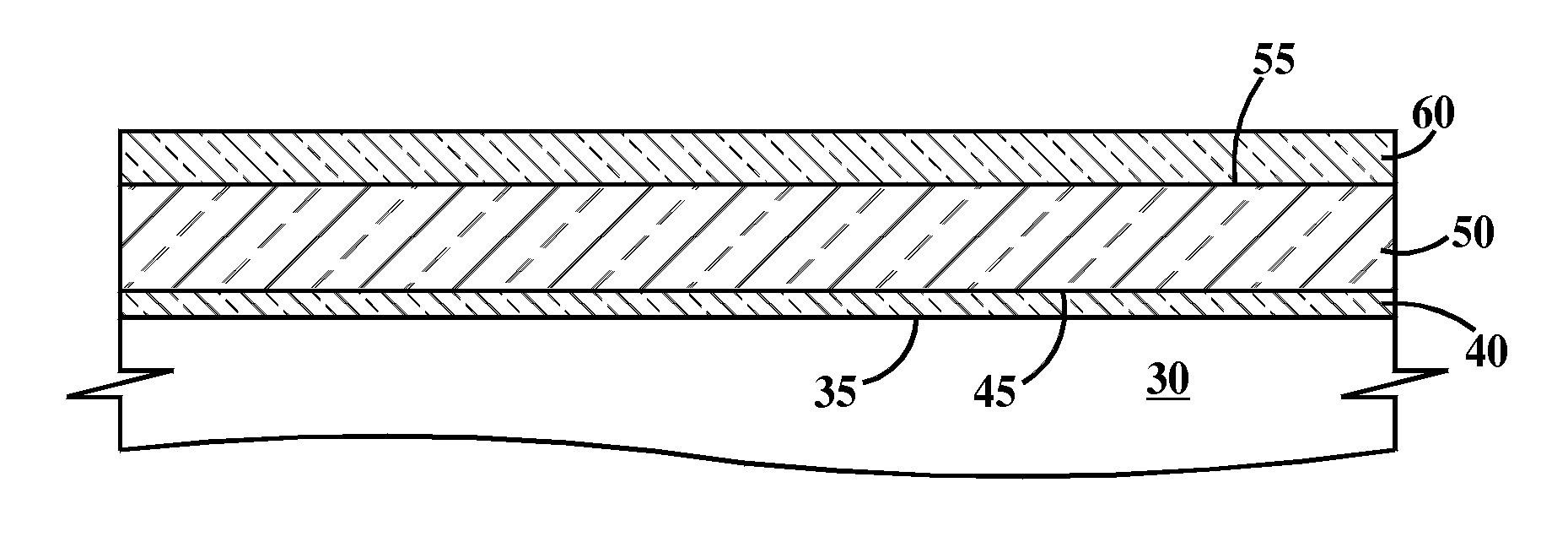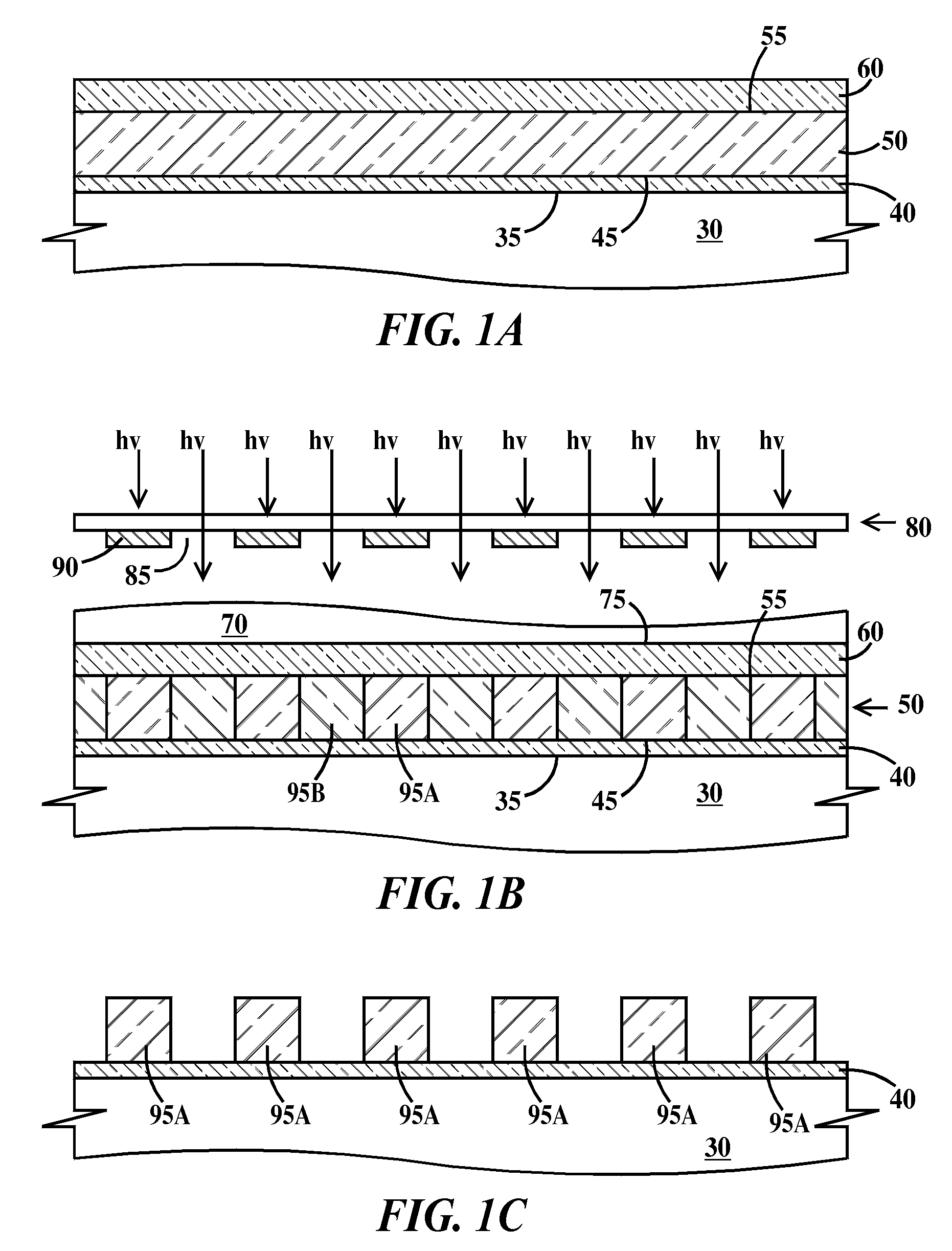Graded topcoat materials for immersion lithography
a topcoat and immersion lithography technology, applied in the field of immersion photolithography, can solve the problems of adverse effects on the exposure system, limited the performance of topcoat materials, and adverse effects on the photoresis
- Summary
- Abstract
- Description
- Claims
- Application Information
AI Technical Summary
Benefits of technology
Problems solved by technology
Method used
Image
Examples
examples
[0047]A representative polymerization procedure for the Class A and Class B polymers is as follows: to a 100 mL round-bottom flask, monomer (1 equiv.), 2,2′-azobis(2-methylpropionitrile) (AIBN) (0.04 equiv.), 1-dodecanethiol (0.03 equiv.) were added. Anhydrous, inhibitor-free tetrahydrofuran was added to afford about 25 percent by weight solids solution. A reflux condenser with a rubber septum was added and the oxygen was removed from the solution by three sequential pump-backfill cycles using nitrogen and vigorous stirring. The reaction was heated to reflux overnight. The reaction mixture was concentrated under vacuum and a small amount of acetone was added. The polymer solution was precipitated into a non-solvent (typically, hexane or methanol). The polymer was isolated and washed with excess non-solvent using a glass-fritted filter. The polymer was dried under vacuum overnight between 60° C. to 80° C., after which time, it was allowed to cool to room temperature under vacuum. In ...
example polymer structures
[0048]Examples 1 through 17 are class A polymers and examples 18 through 48 are class B polymers.
example 1
Poly(1,1,1-trifluoro-2-(trifluoromethyl)-pentan-2-ol-4-yl methacrylate) (iPrHFAMA) Comprises Repeat Units Having the Structure
[0049]
PUM
 Login to View More
Login to View More Abstract
Description
Claims
Application Information
 Login to View More
Login to View More - R&D
- Intellectual Property
- Life Sciences
- Materials
- Tech Scout
- Unparalleled Data Quality
- Higher Quality Content
- 60% Fewer Hallucinations
Browse by: Latest US Patents, China's latest patents, Technical Efficacy Thesaurus, Application Domain, Technology Topic, Popular Technical Reports.
© 2025 PatSnap. All rights reserved.Legal|Privacy policy|Modern Slavery Act Transparency Statement|Sitemap|About US| Contact US: help@patsnap.com



